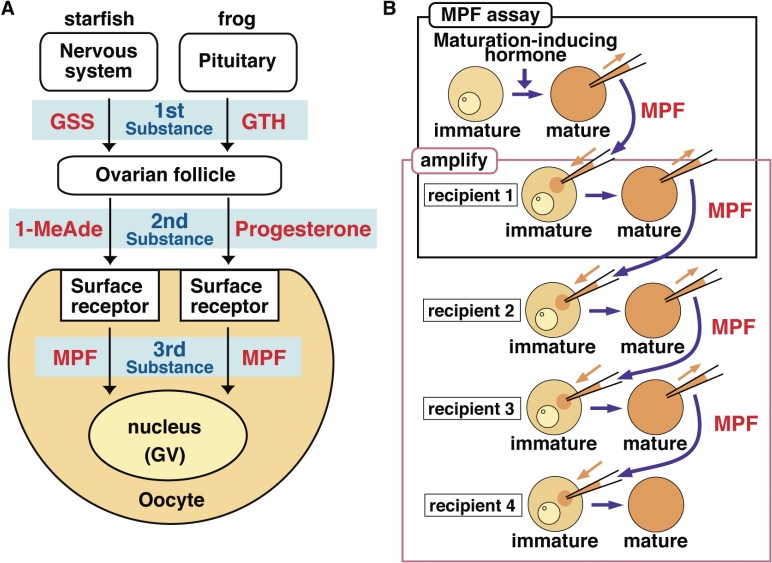Figure 1.
Hormonal control of oocyte maturation and demonstration of MPF. (A) In the endocrine control of oocyte maturation, starfish GSS (released from the nervous system) or frog GTH (released from the pituitary) functions as the first substance acting on ovarian follicles. The second substance, maturation-inducing hormone (starfish 1-MeAde or frog progesterone), is produced by and released from follicles, and acts on the oocyte surface. Based on these, a third substance that is responsible for oocyte maturation was hypothesized in the oocyte cytoplasm, and subsequently designated as maturation-promoting factor (MPF) upon its demonstration as shown in B. (B) MPF, the third substance, was demonstrated by cytoplasmic transfer from maturation-inducing hormone-treated maturing oocytes into untreated immature oocytes, which in turn undergo maturation (upper box). At the same time, the MPF activity was shown not to decrease through multiple successive transfers into immature oocytes in which de novo protein synthesis was prevented (lower box). This was called the “amplification” of MPF, implying that the inactive form of MPF is present in immature oocytes and that it can be autocatalytically activated by the active form of MPF. GV, germinal vesicle (oocyte nucleus).

